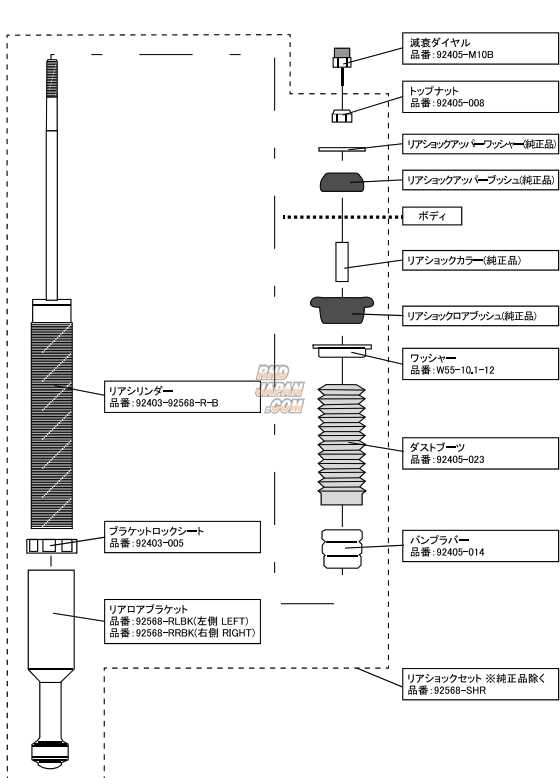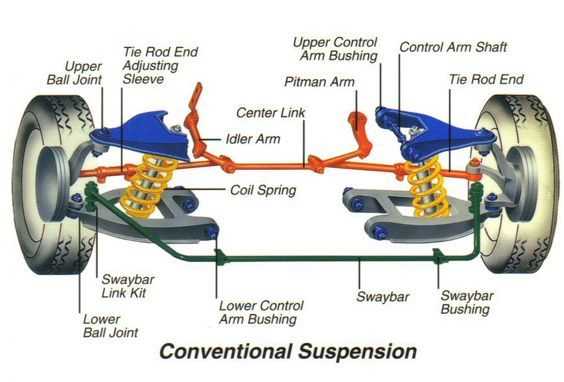
The suspension system is a critical part of any vehicle, directly affecting ride quality, handling, and overall performance. By comprehending the individual elements that make up this system, car enthusiasts and mechanics can achieve better maintenance and upgrades for enhanced driving experience.
In this article, we will explore the various components that work together to create a balanced and responsive suspension setup. Understanding how each piece functions and interacts with others is essential for diagnosing issues or optimizing your vehicle’s performance.
Having a clear visual representation of these components can be highly beneficial when working on upgrades or replacements. Knowing exactly what each element does helps to make informed decisions, ensuring your vehicle runs smoothly and efficiently.
Understanding the Suspension System
The suspension system plays a crucial role in maintaining vehicle stability and comfort. It allows the wheels to move independently, ensuring smooth handling and a controlled ride over different terrains. A well-functioning suspension is key to managing road impacts, minimizing vibration, and improving traction.
How It Works

At the core of the suspension system is a set of key components that absorb shocks and keep the vehicle steady. These elements include dampers, springs, and other adjustable mechanisms that work together to manage the load and distribute weight effectively.
- Dampers – Control the movement of the suspension by absorbing shocks and controlling rebound.
- Springs – Store energy when the vehicle encounters a bump and release it to maintain a smooth ride.
- Adjusters – Allow for fine-tuning the stiffness or softness of the suspension, improving handling based on driving conditions.
Key Benefits
Understanding the system’s components helps improve not only performance but also safety and comfort. Proper adjustments to each element can optimize driving in various conditions, ensuring that the car remains balanced, responsive, and safe on the road.
- Improved Handling – A well-tuned system enhances cornering, stability, and control.
- Increased Comfort – The right suspension configuration minimizes vibrations and road impact, providing a smoother ride.
- Enhanced Durability – Regular maintenance of suspension elements ensures long-term reliability and performance.
Key Components of Suspension Systems
A well-designed suspension setup relies on a combination of elements that work together to manage vehicle movement and provide optimal performance. Each component has a specific role in controlling bounce, reducing impact, and maintaining balance, contributing to overall vehicle handling and comfort.
Main Elements
The suspension system consists of several key components that directly influence how the vehicle reacts to road conditions and driving behavior. Understanding each part’s function helps in making informed decisions during upgrades or maintenance.
- Shock Absorbers – These devices dampen the forces created when the wheels encounter bumps, ensuring that the ride remains smooth and stable.
- Springs – They support the vehicle’s weight and absorb energy when the vehicle moves over uneven surfaces, helping to maintain tire contact with the road.
- Adjustable Damping Mechanisms – Allow the user to fine-tune the stiffness or softness of the suspension for different driving conditions, optimizing control and comfort.
Additional Supporting Elements
Other smaller, yet significant, components enhance the overall suspension system by ensuring proper alignment, stability, and safety during driving.
- Mounting Hardware – Essential for securing all components to the vehicle chassis, ensuring they function together as a cohesive unit.
- Bearings and Bushings – These reduce friction and wear while allowing for smoother movement between various suspension parts.
- Strut Assemblies – Combine shock absorbers and springs into one unit, providing easier maintenance and consistent performance.
How to Read a Suspension System Layout
Understanding how to interpret a visual representation of a suspension system is essential for anyone working on vehicle performance. These illustrations provide valuable insight into how the individual components fit together and function within the overall system. By learning how to read these layouts, you can better understand the mechanics behind the system and make informed decisions about maintenance and upgrades.
Key Symbols and Labels
When viewing a suspension system layout, it is important to familiarize yourself with the different symbols and labels used to represent the components. Each element is typically labeled with either a part number or a description that corresponds to a specific function or feature.
- Component Labels – Each part in the diagram is identified by either a numerical or alphabetical code that corresponds to its specific role, such as shock absorbers, springs, or adjusters.
- Connections – Lines or arrows often indicate how various elements are linked together, showing the flow of movement and forces within the system.
Understanding Measurements and Settings
Most layout diagrams also include measurements and adjustments, allowing you to determine the correct settings for each component. These can include things like spring rates, shock stiffness, and travel limits, which are essential for tuning the suspension to suit different driving conditions.
- Spring Rate – This value indicates the stiffness of the spring and determines how much load it can handle before compressing.
- Shock Absorption Settings – These adjustments allow the user to control how quickly or slowly the shock absorber reacts to road conditions.
- Travel Limits – These measurements show the maximum amount of movement each component can undergo during operation.